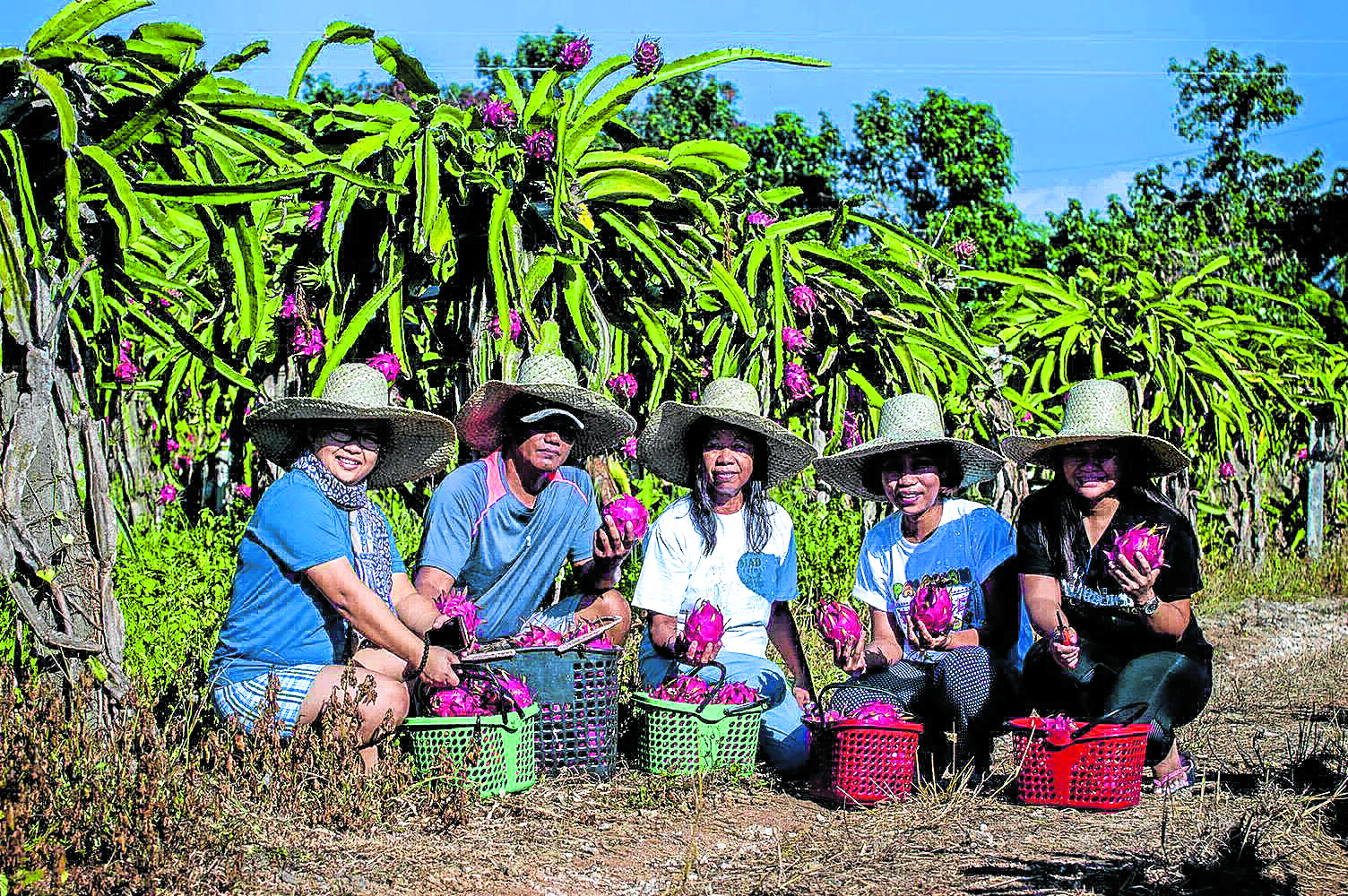Enter the dragon fruit

EXOTIC BEAUTY The hot pink dragon fruit has become increasingly popular among both locals and foreigners who are curious about whether it tastes as good as it looks. —PHOTO COURTESY OF EDITA DACUYCUY
Luis Macalincag saw the great profit potential of dragon fruit when he was just 23 years old. Indeed, right after college, he borrowed P500,000 from his grandfather and invested it in his agriculture venture.
Now 34, he continues to reap the benefits of his foresight and hard work through Agbeam Farm Inc., one of the four leading producers of dragon fruit in the country. “When I started, I tried growing different kinds of crops, from pineapples, calamansi, to leafy vegetables. But I decided to focus on dragon fruit because it’s easy to manage, offers a good return on investment since prices are always good and there is also high demand,” he said.
“Things have significantly improved now compared to when I started. There are a lot of loan programs offered by the government, we now have an association that is willing to assist new ‘agripreneurs’ and there are new technologies that have improved production,” he added.
The hot pink dragon fruit has become increasingly popular among both locals and foreigners who are curious about whether it tastes as good as it looks.
Slice it open, and you are greeted with either a white or a red pulp dotted with black seeds. It is quite sweet and also versatile since it can also be processed into a vitamin-packed and refreshing beverage.
It continues to gain popularity thus the Philippines sees it as another valuable product that can be offered to the global market.
“Some growers are already exporting to Singapore, Hong Kong and China,” Macalincag said, “Export opportunities will widen in a few years to the Middle East and Europe.”
From only 500 hectares in 2017, the country’s total hectarage devoted to dragon fruit has steadily grown to 1,200 ha this year. Industry leaders expect the total area to balloon by over 1,000 percent by 2022 given the right interventions.
Like any agricultural venture, patience is needed when you enter the dragon fruit business. Macalincag said the gain from dragon fruit farming might not be felt until the third year. Once it comes in, however, it can be significant.
The fruit thrives in warm, humid climates and needs very little water, making it an attractive bet during the dry season. New farming practices also allow farmers like Macalincag to plant this promising cash crop year-round.
On average, a dragon fruit farm can yield 11 metric tons per hectare but this can be raised to 40 MT through the use of drip irrigation and quick-connect rain gun systems.
Longtime agripreneurs are also finding ways to trim postharvest losses in dragon fruits currently at 35 percent of the total output, mainly caused by sucking and piercing insects.
Unlike mangoes, dragon fruits are also more resilient to weather changes. They can also be stored longer and are not easily bruised so long as they are stored and packaged properly.
To date, the dragon fruit is being mass-produced in Cavite, Ilocos, Central Luzon, Bukidnon and Davao for its numerous health benefits and taste, according to the Department of Agriculture (DA).
While often eaten raw, this superfood can also be processed into supplements, pastries, alcohol and even canton noodles.
Early this year, the government and the private sector staged the first dragon fruit stakeholders’ meeting for two reasons—expand the country’s dragon fruit production to 10,000 ha and build a P24.2-billion industry by 2025.
“The vision is to be a globally competitive and reliable supplier of fresh and processed dragon fruit products and be the second-largest producer of high-quality dragon fruit in the world—focused on the red flesh variety,” said Basil Bolinao, president of the Philippine Dragon Fruit Growers Association. “To do this, we must provide the technology and know-how to improve dragon fruit production, enhance the socioeconomic well-being of stakeholders, double farmers’ income and expand our exports.”
Bolinao said local producers wanted to dominate the red flesh variety market against Vietnam, which is currently dominating the market by mainly selling the white flesh variety.
For now, the government and the private sector are looking to employ a “big-brother small-brother” approach to help small-holder farmers earn more by diversifying their crops.
The industry’s biggest four producers already committed to enter into contract farming to expand dragon fruit farms in Luzon’s top-producing areas—Ilocos, Cagayan Valley, Calabarzon and Central Luzon—where they would also share modern farming practices.
Other farmers like Macalincag also offer a franchise model to other agripreneurs who would like to venture into the dragon fruit market.
Those who would like to enter the dragon fruit industry may tap zero-interest loan funds from the DA for up to P3 million, but as farmers say, you can always start small.
“We’ve worked with people who only have 400 square meters of land and with less than a million-worth of capital. Agriculture has so much potential, and we believe this is one of the most effective ways to recover from the pandemic,” said Macalincag. INQ
